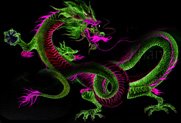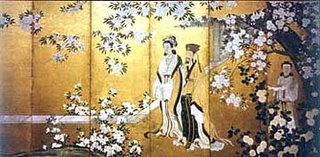
Image of The Emperor Tang Xuanzong and Yang Gui FeiYang Gui Fei is one of the most beautiful ladies of ancient China but she got the most unfortunate compare to those three left.
Yang Gui Fei or Yang Concubine was named Yang Yuhuan, she was a daughter of a nobleman in the little village by her 16 years old, her father sent her into the palace to be a wife of the sixteenth years old 18th prince.
After she got into the palace, her beautiful appearance was well-known after the Emperor Tang Xuanzong heard that he wanted to see this girl so that he went to his son’s palace; once Xuangzong saw Yang Yuhuan he suddenly fell in love with her and accommodated her into his palace. In that time Xuanzong was 56 years old and Yang was 22 years old
Yang Concubine’s characterYang Gui Fei ImageYang was not only beautiful but also very clever, learned fast and talented in music and dancing, the sound of music of Yang brought Xuanzong into day-dream.
One day Xuanzong took Yang to see the beautiful white lotus, and said, "The lotus is beautiful without spirit, it cannot be compared with my concubine. My concubine is the best flower in the world."
After several years she became ennobled high-ranked imperial concubine and ranked with the Empress the she was named as Yang Gui Fei.
The smile of Yang Gui Fei was enough to enchant and enrapture the Emperor. Xuanzong loved her more than anything in the world; he even built her a natural warm spring pool which she could take a bath at spring time.
The First Class Concubine’s powerAfter Yang Yuhuan, a normal ordinary girl from little village became the first class concubine Yang Gui Fei; gradually her family’s member gained the high position in the government the finally Yang’s family gained enormous power in the Tang Court. Yang Guo Zhong who was Yang Gui Fei’s eldest brother became the Prime Minister but he was very corrupt.
At the time people in Tang Dynasty preferred to have a daughter than son because of Yang family who got the glory and wealth form Yang Gui Fei so that people hope their daughter could follow her footsteps to be the favorite concubine of the Emperor.
The End of the ProsperityAfter several years that Yang Guo Zhong governed the Tang’s land as a prime minister, people got suffer from his corruption and lived very poor and difficult. Image of Yang ConcubineAn Lu Shan who was the non Han Chinese commander-in-chief and governor of Fan Yang had come to visit Chang An the Capital and found out that the Prime Minister so that he wanted to report to the Emperor but not success by this situation he had made a formidable enemy then Yang Guo Zhong also knew about this and vowed to destroy him.
The RebellionYang Guo Zhong sent troops to ransack An Lu Shan’s house and also killed An Lu Shan’s friend that enraged An Lu Shan so that he wanted to retaliate without no others mission.
An Lu Shan leaded 170,000 troops marched to the Chang An the Capital to make a war against Yang Guo Zhong. An Lu Shan’s troop were unstoppable, they crossed the Yellow River, overran Luo Yang and went straight to Chang An in
china.
The people and also the government of Tang were in panic since the Emperor ordered a mass evacuation then not so long, An Lu Shan occupied the capital and demolished it to the ground.
The ExecutionThe procession of the Emperor went southwest towards Cheng Du with the thousands of the residents from the capital and after arrived Ma Wei Yi which is about 100 kilometers from the Capital the mass of people stopped and refused to go and protect the Emperor.
People demanded the death of Yang Gui Fei and Yang Guo Zhong since they were the cause of this destruction. Xuanzong had no alternative under such extreme circumstances so that he issued an order the have them executed.
The Prime Minister was carried out for the execution instantly and for Yang Gui Fei was to be executed by hanging from the tree in a nearby hill. At the time Yang Gui Fei cried and begged for life, Xuanzong had powerless to help her but hung his head and buried his face in his dragon robes.
After Yang Gui Fei kicked her bucket and died finally, the crowd were quiet. Yang Gui Fei’s jewelry was scattered all over but nobody picked them up.
The Emperor’s life after the death of his love’s one
The death of Yang Gui Fei brought out the spirit of Xuanzong also, he lost his vitality to continue as Emperor so that he abdicated the throne to his third son, Li Heng who became Emperor Su Zong.
After the rebellion were crushed, Tang Court moved back to Chang An and on the way back to the Capital at the spot where Yang Gui Fei died Xuanzong stopped and he tried to find the place that she was buried but couldn’t.
At the times Xuangzong could not bear to look at the full moon as it reminded him to think of Yang Gui Fei. Xuanzong recited the secret the phrases which nobody knew but him and her.
"Up above the sky we wish we were a pair of birds
On earth we wish we were the two branches of a tree."
At Chang An the capital, the natural warm spring pool was still there and also the flowers and trees but no more Yang Gui Fei. Xuanzong lost his will to live, he lived with grieve only hope he had in that time was to see Yang Gui Fei in his dreams every night. He ordered the soothsayer to search for her spirit but never appear, not even just once…
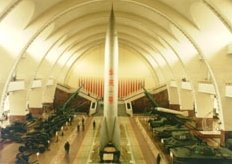 The Chinese Military Museum is located in western Beijing just south of the beautiful Yuyuantan Park. The exhibits cover 5,000 years of Chinese Military history.The permanent exhibits include: Hall of the Northern Expedition and Agrarian War, Hall of the War of Resistance Against Japanese Aggression, Hall of the National Liberation Wars, Hall of Weapons, Hall of Ancient Wars, Hall of Modern Wars.
The Chinese Military Museum is located in western Beijing just south of the beautiful Yuyuantan Park. The exhibits cover 5,000 years of Chinese Military history.The permanent exhibits include: Hall of the Northern Expedition and Agrarian War, Hall of the War of Resistance Against Japanese Aggression, Hall of the National Liberation Wars, Hall of Weapons, Hall of Ancient Wars, Hall of Modern Wars.










 The street adjacent to Laitai Flower Lady Street is known as Beijing Lady Street, and is the largest clothes market in Beijing lady street China. Its 1,100 stalls trade in clothes, shoes, headgear, and some 10,000 other commercial varieties.
The street adjacent to Laitai Flower Lady Street is known as Beijing Lady Street, and is the largest clothes market in Beijing lady street China. Its 1,100 stalls trade in clothes, shoes, headgear, and some 10,000 other commercial varieties.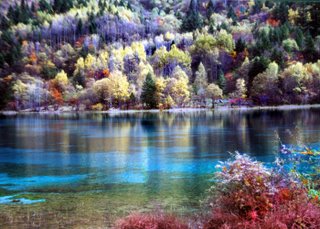
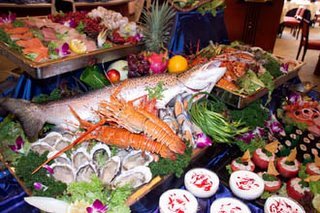
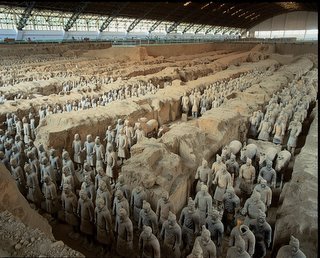 Spring and autumn are ideal travel seasons in Xian, and the best time to travel are May, August, September, and October. A lot of indoor tourist attractions such as the Museum of Emperor Qin Shi Huang’s Terracotta Warriors and Horses, Stele Forest, Shaanxi History Museum and the Great Mosque also welcome tourists in summer and winter.
Spring and autumn are ideal travel seasons in Xian, and the best time to travel are May, August, September, and October. A lot of indoor tourist attractions such as the Museum of Emperor Qin Shi Huang’s Terracotta Warriors and Horses, Stele Forest, Shaanxi History Museum and the Great Mosque also welcome tourists in summer and winter.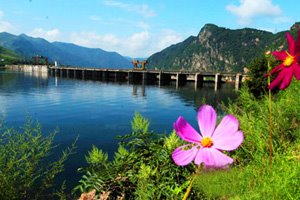 The Yalujiang River extends along the western boundary between China and North Korea, and flows from a temperate deciduous forest source through extensive agricultural areas.
The Yalujiang River extends along the western boundary between China and North Korea, and flows from a temperate deciduous forest source through extensive agricultural areas.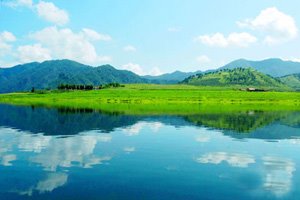 long-term averaged discharge rate is about 1,200 m. The sediment load is relatively low and concentrations of suspended matter are also often low. Compared with most Chinese rivers, phosphate in the Yalujiang River is relatively low but nitrate is very high.
long-term averaged discharge rate is about 1,200 m. The sediment load is relatively low and concentrations of suspended matter are also often low. Compared with most Chinese rivers, phosphate in the Yalujiang River is relatively low but nitrate is very high.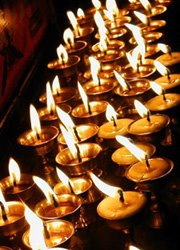 Tibet has unique food and drink due to its highland climate, religious beliefs and distinctive ethnic customs. Famous traditional food includes butter tea and fried flour. Tibetans eat a lot of beef and mutton but avoid dog and donkey meat.
Tibet has unique food and drink due to its highland climate, religious beliefs and distinctive ethnic customs. Famous traditional food includes butter tea and fried flour. Tibetans eat a lot of beef and mutton but avoid dog and donkey meat.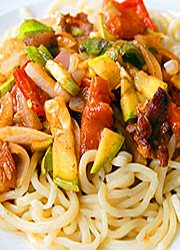 Most of the restaurants in Lhasa cluster around the Jokhang Temple and Barkhor Street, the center of Lhasa City. Here are some of them : Crazy Yak Saloon Has unique Tibetan decor and furnishings as well as highly acclaimed Tibetan food, especially yak meat. Another highlight is the Tibetan song and dance show from 7:30pm to 8:30pm every evening. Location: next to Kirey Hotel, No.101 Beijing East Road China.
Most of the restaurants in Lhasa cluster around the Jokhang Temple and Barkhor Street, the center of Lhasa City. Here are some of them : Crazy Yak Saloon Has unique Tibetan decor and furnishings as well as highly acclaimed Tibetan food, especially yak meat. Another highlight is the Tibetan song and dance show from 7:30pm to 8:30pm every evening. Location: next to Kirey Hotel, No.101 Beijing East Road China.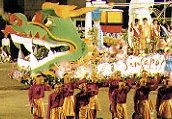 What's On Performances on large decorated floats, open-air concerts, Chinese-foreign tea culture exchanges, symposiums on internaitonal tourism and displays of the art and culture of the Red Mansions.
What's On Performances on large decorated floats, open-air concerts, Chinese-foreign tea culture exchanges, symposiums on internaitonal tourism and displays of the art and culture of the Red Mansions. Image of The Emperor Tang Xuanzong and Yang Gui FeiYang Gui Fei is one of the most beautiful ladies of ancient China but she got the most unfortunate compare to those three left.
Image of The Emperor Tang Xuanzong and Yang Gui FeiYang Gui Fei is one of the most beautiful ladies of ancient China but she got the most unfortunate compare to those three left.
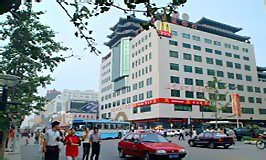 Wangfujing street China and its surroundings have quite a selection of shopping options.
Wangfujing street China and its surroundings have quite a selection of shopping options. 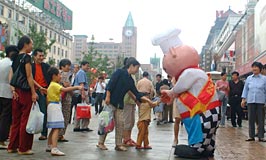 The second of the two malls is near the subway and is called Oriental Plaza. This is a huge complex and one of the biggest malls in Asia. It has only 2 floors, but it stretches for a few city blocks. It is so big there are subway stations more or less at each end. It takes about 15 minutes to walk the length, if you are a quick walker.
The second of the two malls is near the subway and is called Oriental Plaza. This is a huge complex and one of the biggest malls in Asia. It has only 2 floors, but it stretches for a few city blocks. It is so big there are subway stations more or less at each end. It takes about 15 minutes to walk the length, if you are a quick walker.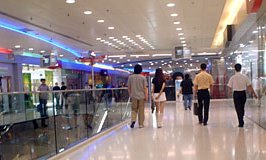 Near Oriental Plaza there is one of the largest book stores in
Near Oriental Plaza there is one of the largest book stores in 